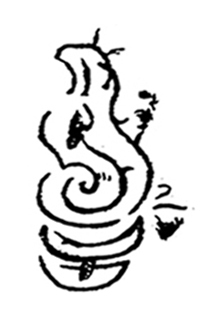
Venad was a medieval kingdom lying between the Western Ghat mountains and the Arabian Sea on the south-western tip of India with its headquarters at the port city of Kollam/Quilon. It was one of the major principalities of Kerala, along with kingdoms of Kannur (Kolathunadu), Kozhikode and Kochi (Perumpadappu) in medieval and early modern period.

The Padmanabhaswamy temple is a Hindu temple located in Thiruvananthapuram, the state capital of Kerala, India. The name of the city of Thiruvananthapuram in Malayalam translates to "The City of Lord Ananta", referring to the deity of the Padmanabhaswamy temple. The temple is built in an intricate fusion of the Chera style and the Dravidian style of architecture, featuring high walls, and a 16th-century gopura. While the Ananthapura temple in Kumbla is considered the original seat of the deity ("Moolasthanam"), architecturally to some extent, the temple is a replica of the Adikesava Perumal temple in Thiruvattar.

The Chera dynasty was one of the principal lineages in the early history of the present day states of Kerala and Tamil Nadu in southern India. Together with the Cholas of Uraiyur and the Pandyas of Madurai, the early Cheras were known as one of the three major powers (muventar) of ancient Tamilakam in the early centuries of the Common Era.

Mushika dynasty, also spelled Mushaka, Tamil/Malayalam: Eli or Ezhi, was a minor dynastic power that held sway over the region in and around Mount Ezhi (Ezhimala) in present-day Kerala, south India. The country of the Mushikas, ruled by an ancient lineage of velir-level chieftains of the same name, appears in early historic (pre-Pallava) south India. Early Tami poems contain several references to the exploits of Nannan of Ezhimalai. Nannan was known as a great enemy of the pre-Pallava Chera chieftains. The clan also had matrimonial alliances with the Chera, Pandya and Chola chieftains.
The Ettuveetil Pillamar were nobles from eight Houses in erstwhile Venad in present-day Kerala state, South India. They were associated with the Padmanabhaswamy temple in Thiruvananthapuram and the Ettara Yogam. Their power and wealth grew until Marthanda Varma (1706–1758), the last king of Venad and the first king of Travancore, defeated them in the 1730s.
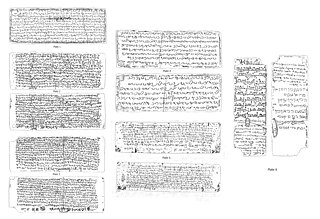
Kollam/Quilon Syrian copper plates, also known as Kollam Tarisappalli copper plates, or Kottayam inscription of Sthanu Ravi, or Tabula Quilonensis record a royal grant issued by the chieftain of Kollam to a Christian merchant magnate in Kerala. The royal charter is engraved in old Malayalam in Vattezhuthu on six copper plates. The document is one of the important historical inscriptions of Kerala, the date of which has been accurately determined.

Vazhappally is a suburb of Changanasserry Municipality, Kottayam District, in central Kerala. The famous Vazhappally Shiva Temple is situated in Vazhappally. Vazhappally is a part of Changanacherry Taluk in Kottayam District. It is located in the city of Changanacherry and Vazhappally Panchayath. The ancient Vazhappally gramam (village) was shifted to the Changanassery Municipality, so small portions of the village were reunited in the Municipal Town of Changanassery, while the rest were reconstructed in the Vazhappally Gram Panchayat.
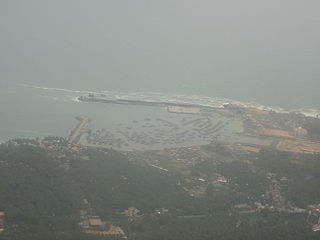
Ay dynasty, also known as Kupaka in medieval period, were an Indian ruling lineage which controlled the south-western tip of the peninsula, from the early historic period up to the medieval period. The clan traditionally held sway over the harbour of Vizhinjam, the fertile region of Nanjinad, and southern parts of the spice-producing Western Ghat mountains.

Mar Sapir and Mar Prot, according to Syrian Malabar Christian tradition, were two Syrian missionaries who, with a migrant group, landed in the port of Kollam in 823 AD. The mission is said to have received permission from the then king of Kerala to build a church in Kollam.
"Aswathi Thirunal" Umayamma, known as Queen Umayamma or Queen Ashure (Aswathi), was the regent queen of Venad (Venatu) in southern India from 1677 to 1684 on behalf of her young nephew Ravi Varma. She also served as the Junior Queen of Attingal under Senior Queen Makayiram Thirunal and subsequently as the Senior Queen of Attingal.

Jewish copper plates of Cochin, also known as Cochin plates of Bhaskara Ravi-varman, is a royal charter issued by the Chera/Perumal king of Kerala, south India to Joseph Rabban, a Jewish merchant magnate of Kodungallur. The charter shows the status and importance of the Jewish colony in Kodungallur (Cranganore) near Cochin.

The Thiruvanvandoor Mahavishnu Temple is a Hindu temple dedicated to Vishnu and located in Thiruvanvandoor, Alappuzha District, Kerala, South India. Constructed in the Kerala style of architecture, the temple is glorified in the Divya Prabandha, the early medieval Tamil canon of the Azhwar saints from the 6th–9th centuries AD. It is one of the 108 Divyadesam dedicated to Krishna, an avatar of Vishnu, who is worshipped as Paambanaiappan. The nearest railway station to the temple is located in Chengannur, while the nearest airport is Trivandrum International Airport.

Sthanu Ravi Varma, probably known as the Kulasekhara, was the Chera Perumal ruler of Kerala in southern India from 844 to c. 870/71 AD. Sthanu Ravi is often identified with playwright king Kulasekhara Varma, and with Bhakti saint Kulasekhara Alvar.

Thirupalkadal SreeKrishna Temple is one of the oldest Hindu temples dedicated to the god Vishnu, located in the village Keezhperoor, Thiruvananthapuram in Kerala, India. The central icon is a four-armed standing Vishnu carrying the conch Panchajanya(Turbinella pyrum), the discus Sudarshana Chakra, the mace Kaumodaki and a lotus with a Holy basil garland. The principal deity, Krishna(Thirupalkadal Bhattarakar) was the family deity of Ay Family, who ruled over the place during the Sangam period. The kingdom and the family later came to be known as Venad Keezhperoor Swaroopam. In the early medieval Tamil literature canon of the Tamil Alvar saints, the temple is one of the 108 principal Divya Desams in Vaishnavism, and is glorified in the Divya Prabandha. The Divya Prabandha glorifies this shrine as being among the 14 Divya Desam in Malai Nadu. It is believed that Kulashekhara Alwar, considered the seventh in the line of the twelve Azhwars, renovated this temple.The Temple legends of this temple are closely intertwined with that of the empires and kingdoms that ruled Tamizhagam and the state presently known as Kerala. The history of this Temple is closely intertwined with the Chera and Chola Empires and the Kingdoms of Venad and Travancore. This Temple is located in the Keezhperoor village, Chirayinkeezhu Taluk, Thiruvananthapuram District, Kerala. This Temple is located in a peaceful and serene rustic countryside.

Vikramaditya —better known as Vikramaditya "Varaguna"—was a monarch of the Ay dynasty of south India. His surname indicates that he was a vassal or feudatory of the Pandya ruler Varaguna II. He was the immediate successor of Karunantatakkan "Srivallabha", a vassal of Pandya king Srimara Srivallabha.

Quilon or Coulãopronunciation (help·info), officially Kollampronunciation (help·info) is one of the ancient civilizations in India. It is one of the oldest port cities in the Malabar Coast and was the capital city of historic Venad Kingdom and Travancore Kingdom. Quilon was once an important trading port in India. It was also known as Desinganadu. It is now known as the "Cashew Capital of the World".

Thiruvalla copper plates, also known as the Huzur Treasury Plates, are a collection of medieval temple committee resolutions found at the Sreevallabha Temple, Thiruvalla, Kerala. The collection of plates, engraved in old Malayalam language in Vattezhuthu with some Grantha characters, can be dated to 10th and 11th centuries AD.
Mukilan was a Mughal warlord who attacked Venad during the reign of Umayamma Rani. The invasion is presumed to have occurred during Malayalam Era 855.
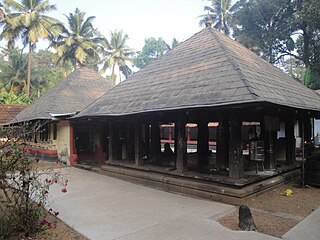
Thiruvatta Mahadeva Temple is an ancient Hindu temple dedicated to Lord Shiva is situated on the banks of the Manimalayar (river) in Thiruvalla of Pathanamthitta District in Kerala state in India. References to this temple is found in Vazhappally inscription relates to the rule of Kodungallur Chera king Rama Rajasekhara and temple at Vazhappally. It is the earliest available epigraphical record mentioning a Kodungallur Chera king and written in Malayalam language. According to folklore, sage Parashurama has installed the idol of Lord Shiva in the Treta Yuga. The temple is a part of the 108 famous Shiva temples in Kerala.
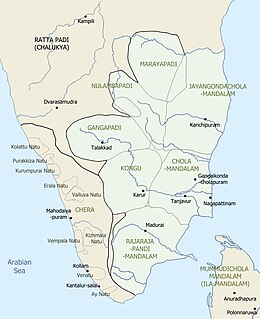
Chera/Perumals of Makotai, also known as the Perumal dynasty of Kerala, or Cheraman Perumal dynasty of Mahodayapuram, were a ruling dynasty in present-day Kerala, south India. Makotai, or Mahodayapuram, the seat of the Cheraman Perumals, is identified with present-day Kodungallur in central Kerala. Initially, their influence appeared limited to the area between present-day Quilon and Quilandy, but later extended to up to Chandragiri river in north Kerala and to Nagercoil in the south.

















